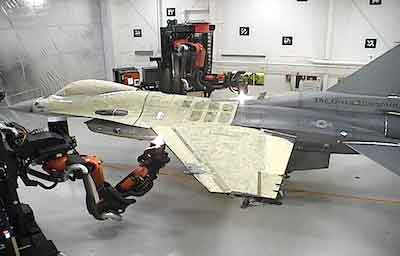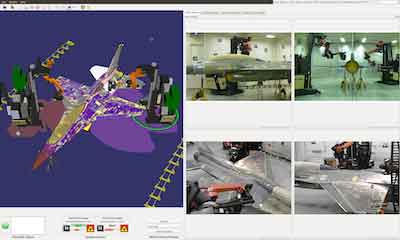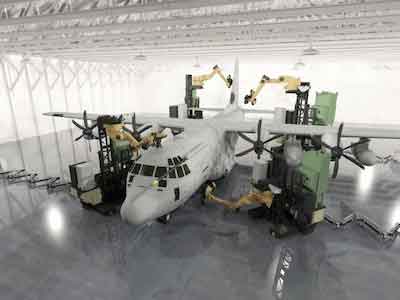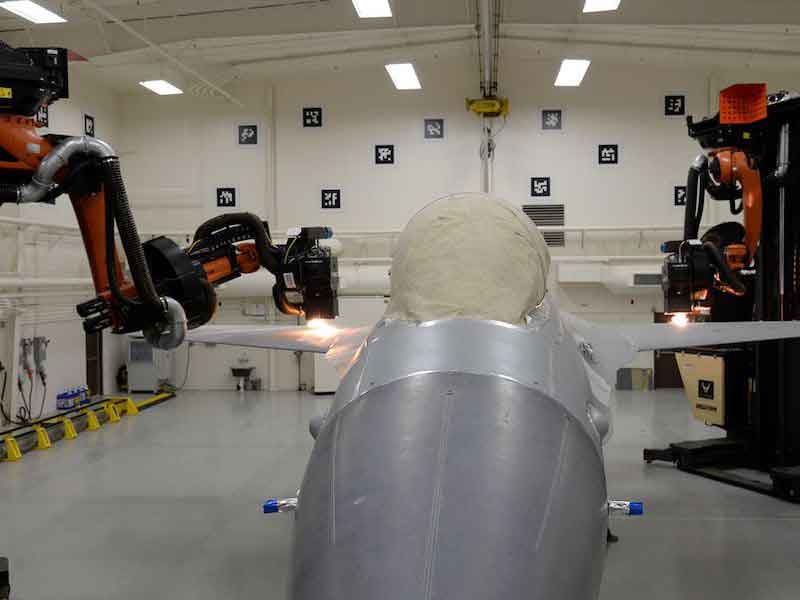In the aviation industry, hexavalent chromium is well known for two very different reasons.
One is its ability to prevent dangerous corrosion when applied to aircraft surfaces and other structures. Without preventive measures, the metal skin of an airplane will inevitably undergo this natural but destructive process simply from contact with the environment. Chromates applied to metal aircraft parts behave like “sacrificial anodes,” protecting the integrity of critical structures by reacting to corrosion first.
However, hexavalent chromium is at least as famous in aircraft maintenance circles for its highly toxic nature. According to the Occupational Health and Safety Administration (OSHA), on-the-job exposure “can cause severe health effects to workers, including lung cancer.” It is classified as a Group 1 carcinogen by the International Research Agency on Cancer, meaning that its link to cancer in humans is definitively supported by evidence, as in the case of asbestos or benzene.
On the one hand, the prevention of corrosion is absolutely essential for safe flight. And while promising alternatives to chromium-based coatings are being investigated, the level of engineering performance they offer is difficult to match. Hexavalent chromium provides protection over a wide range of pH levels and electrolyte concentrations and possesses other useful chemical properties as well. On the other hand, hexavalent chromium’s toxicity adds danger, difficulty, and expense to the essential business of aircraft maintenance.
What Goes On, Must Come Off
 A depainting process designed by Titan Robotics improves safety by reducing the risk of exposure to toxic chemicals. To exacerbate this challenging situation, aeronautical safety requires not only that aircraft be painted but that they are periodically depainted as well. According to Boeing, planes need to have their coatings of paint removed about every five years.
A depainting process designed by Titan Robotics improves safety by reducing the risk of exposure to toxic chemicals. To exacerbate this challenging situation, aeronautical safety requires not only that aircraft be painted but that they are periodically depainted as well. According to Boeing, planes need to have their coatings of paint removed about every five years.
Regular inspections of the bare surface of an aircraft are important to ensure its structural integrity. Furthermore, if new layers of paint are simply added over the years — for example, to refresh the plane’s appearance or change its logo — this approach will eventually add significant weight, inflating fuel costs.
In the past, a variety of methods have been deployed to remove the paint. The once common paint stripper methylene chloride is itself extremely toxic and is now highly regulated by both OSHA and the EPA. Abrasive methods, such as blasting the plane with a spray of plastic pellets, are permitted with proper ventilation.
However, blasting the paint off a single F-16 can produce up to a ton of hazardous waste. And working in a cloud of toxic dust is extremely unpleasant for maintenance personnel, even with personal protective equipment.
Relief from Robotics
 Regular inspections of the bare surface of an aircraft are important to ensure structural integrity. Now, relief is at hand in the form of a new laser-based depainting system from Pittsburgh-based Titan Robotics.
Regular inspections of the bare surface of an aircraft are important to ensure structural integrity. Now, relief is at hand in the form of a new laser-based depainting system from Pittsburgh-based Titan Robotics.
Titan is a “spinout” from the National Robotics Engineering Center (NREC) at Carnegie Mellon University (CMU). Starting in 2010, the U.S. Air Force funded research at the NREC with the goal of developing an automated aircraft surface processing system. By 2014, the success of this work led CMU faculty to find Titan as a commercial arm for this newly developed technology.
Titan’s approach starts with using continuous-wave lasers to remove the paint. When the coating material absorbs the laser light, the molecules are excited into the plasma state, and the layer vaporizes. While small amounts of solid residue remain, laser ablation produces less than 10% of the waste created by prior methods.
Titan’s strong capabilities in software development then allowed them to develop a system in which robots operate the lasers, removing the need for human exposure.
“We add more complexity and software control on to typical development of automated solutions,’’ says Alex Klinger, a program engineer at Titan. “With our software, the robots figure out where the plane is, how much paint is on the plane, what type of paint, and how to burn the paint off.”
Advanced Technologies Pave the Way
 The process includes Triflex cables from Igus, which have the capability to handle the weight of heavy cables and allow the robots to deliver utilities to the point of use. The robots begin with a basic map of the airplane’s topography. Then, a sensor technology widely used in the autonomous vehicle sector comes into play. The robots execute a series of more detailed scans using LiDAR — or light detection and ranging — ultimately creating a complete 3D map of the surface to be depainted.
The process includes Triflex cables from Igus, which have the capability to handle the weight of heavy cables and allow the robots to deliver utilities to the point of use. The robots begin with a basic map of the airplane’s topography. Then, a sensor technology widely used in the autonomous vehicle sector comes into play. The robots execute a series of more detailed scans using LiDAR — or light detection and ranging — ultimately creating a complete 3D map of the surface to be depainted.
In systems designed to work on full aircraft, a pair of robots mounted on mobile bases will drive themselves around the plane in order to map the surface and execute the depainting. Titan can also create systems in which the robots are fixed in place or in which they travel along rails for off-aircraft work on very long components.
As a key element in the design, Titan needed to incorporate specially engineered cable carriers to guide and protect the power supply and other essential connections for these highly mobile robots. For this purpose, they chose the Triflex cable carrier system manufactured by Igus, which can hold up to 16 cables at a time.
The Triflex carriers were able to handle the large number of heavy cables that Titan needed to deploy.
“The weight and the volume are substantial,’’ Klinger says. “I think it’s 12-to-16 distinct cables, and they can be held very nicely.”
The Triflex system also allowed the robots to move as freely as the concept required.
“It can hold the cables, but it also has a three-degree freedom of movement,’’ Klinger says. “A lot of cable chains move in a two-dimensional space, not a three-dimensional space. When you get to complex motions, where a robot is working in three-dimensional space, we need a flexible link that can contain the cables while the robot operates with six degrees of freedom. Triflex can do that.”
The system’s multi-axis cable carriers feature a defined bend radius, a split cavity to reduce excessive wear, and a built-in torsion stop to reduce mechanical stress.
“For us, it’s all about having confidence in those cables,” Klinger says. “We know the product will contain them, will limit how they bend, and it will hold them exactly where we want them to for the entire time.”
Safe Supervision
In the absence of an automated solution, depainting was a dirty, risky job for aircraft maintenance personnel. As Klinger put it, “you had the human factors of a person working in a terrible environment for a long period of time.’’
With Titan’s system in place, humans monitor the robots’ work from a control room instead.
“It’s really about safety,’’ Klinger says. “They’re really just being the supervisor of the system, making sure it’s doing what it’s supposed to be doing.”
Katherine Bonamo and Thomas Renner write on engineering, construction, and other trade industry topics for publications in the United States and Canada.



































